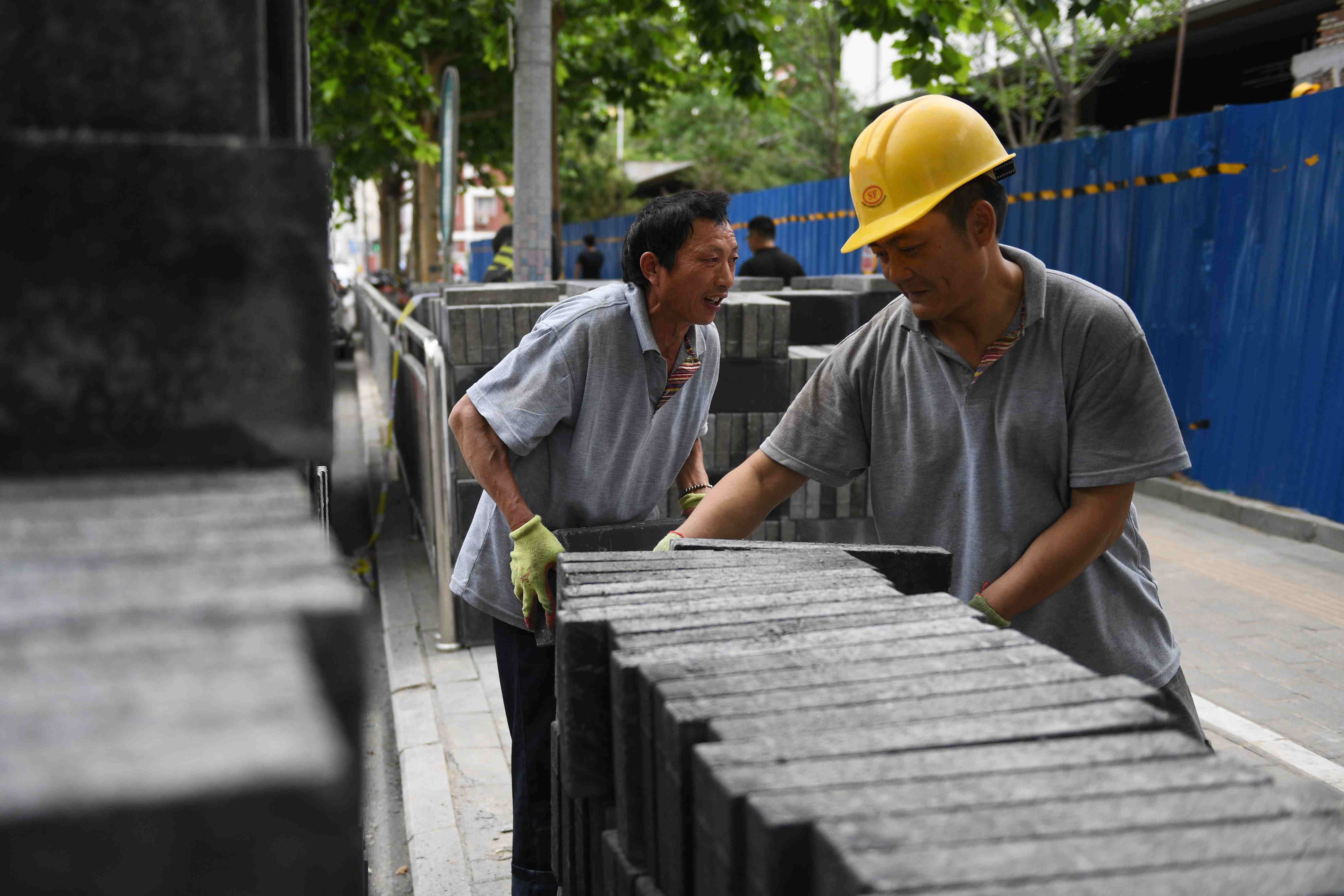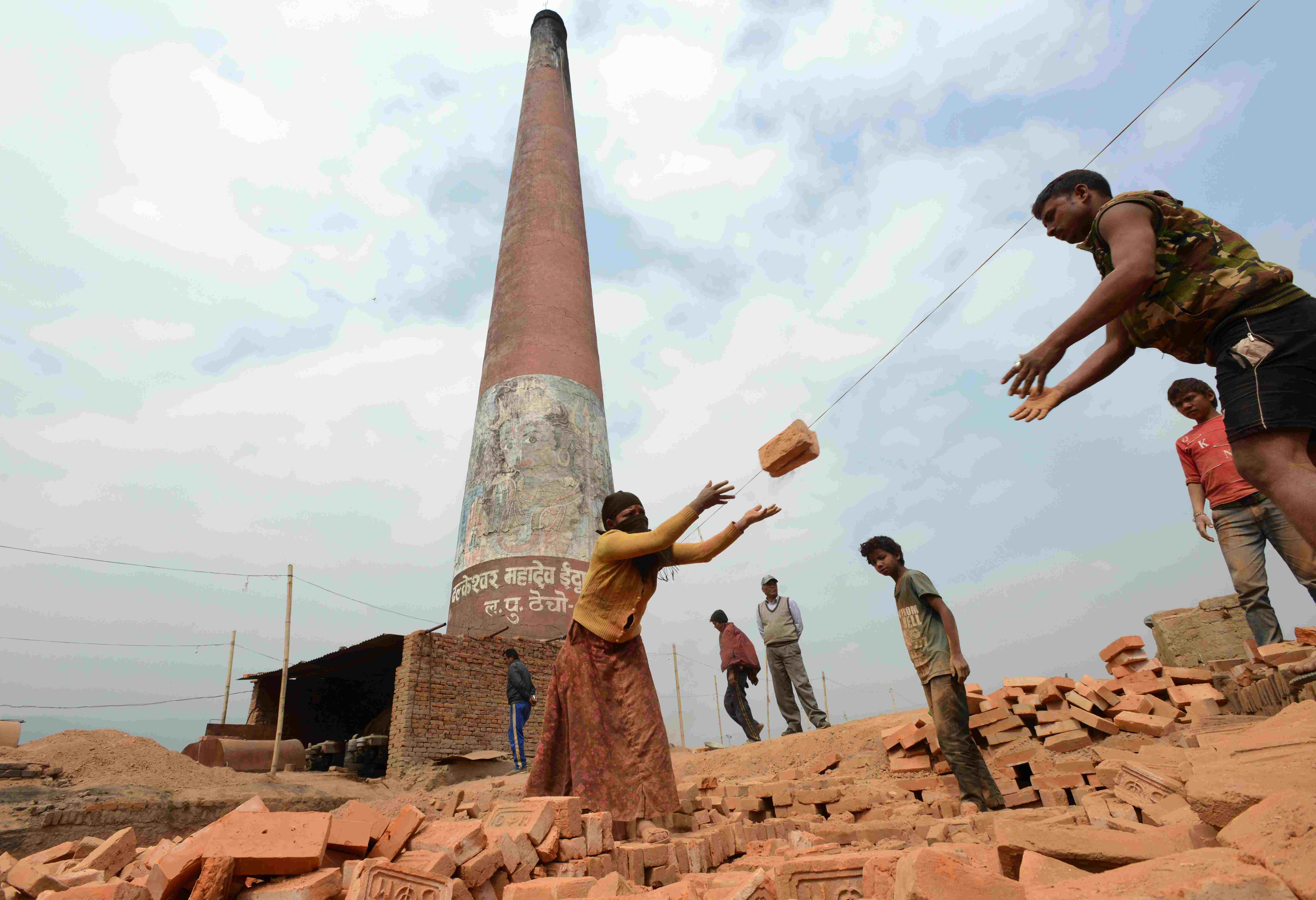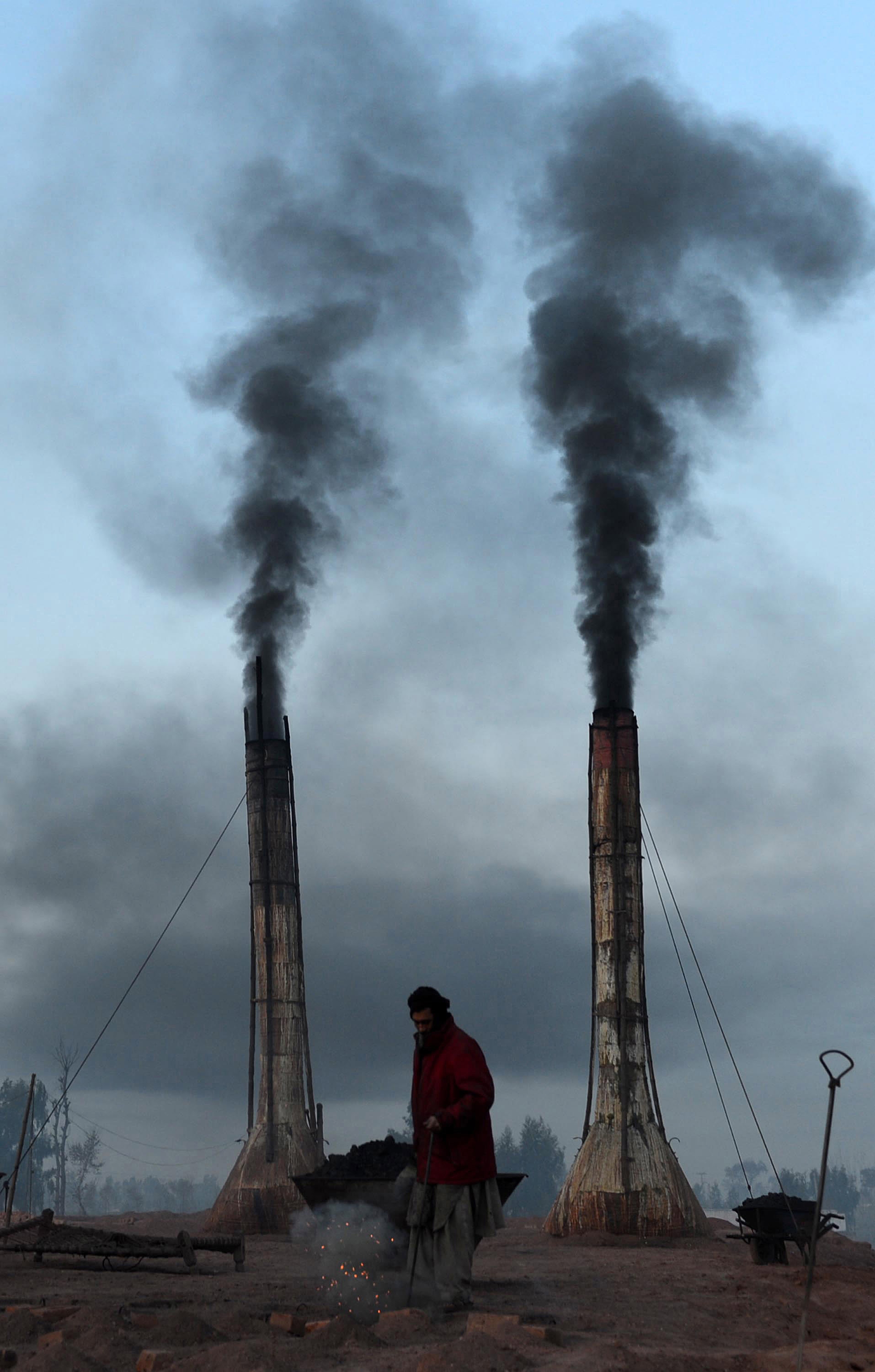
China
20:43, 13-Sep-2017
China holds lessons on clean brick production as winter smog looms
Alok Gupta

Thousands of brick kilns in South Asia are about to be fired back up after their traditional suspension for the monsoon season, as the region cries out for new homes after an estimated 31 million people were left homeless by devastating floods this year.
But while the production will be good news for many, the restart of the notoriously polluting industry is bad news for the environment. The black carbon and PM 10 fine particulate matter spewed from kilns adds to the winter smog faced by the region every year.
The leader in the battle to clean up brick production may be surprising to some. China, plagued by heavy pollution, has adopted brick manufacturing technology that pollutes less and churns out more bricks.
Coal guzzler
Kilns in Asia consume a whopping 115 million tonnes of coal every year to manufacture 1.3 trillion bricks, which is 85 percent of global brick production.
Apart from China, other South Asian countries are still using old-fashioned kilns known as fixed chimney bull trench kilns (FCTBK) and moving chimney bull trench kiln (MCBTK) that are inefficient and consume a large quantity of coal.
In India, nearly 50,000 kilns still run on primitive FCBTKs, while Pakistan has nearly 90,000 kilns and Nepal has 700 kilns running on similar technology, according to official data.
This has led to heavy coal consumption. China’s advanced 80,000 kilns manufacture around 1 trillion bricks annually using only 50 million tonnes of coal. On the other hand, almost 101,000 kilns in India, Nepal, Pakistan, Bangladesh and Vietnam jointly burn 60 million tonnes of coal to produce barely 310 billion bricks.
In high-tech China, around 4.9 million people staff the country’s kilns, while nearly nine million are needed to feed the fires of other Asian countries. India, Nepal, Pakistan and Bangladesh kilns are notorious for child labor.

Kilns in China pump out 1 trillion bricks annually. /AFP Photo
Kilns in China pump out 1 trillion bricks annually. /AFP Photo
Kilns adding to winter smog
Indian environmental think tank the Center for Science and Environment (CSE) estimates that the brick kiln sector is the fourth-largest culprit of PM 10 emissions in the smoggy periphery of Delhi. Brick kilns are surpassed as the area’s biggest polluter by transport, road dust and thermal power plants, according to the CSE.
Due to severe pollution, brick manufacturing is banned in Delhi itself. However, kilns have moved to a neighboring area known as the National Capital Region (NCR). The CSE puts the number of brick kilns in three NCR districts of Ghaziabad, Gautam Budh Nagar and Hapur at around 700. Most of these kilns are FCTBKs.
Nepal rethought its polluting kilns after the earthquake in 2015. It realized the massive demand for bricks for rebuilding would bring choking smog to Kathmandu, where the majority of kilns are located.
Nepal received a whopping 4.1 billion US dollars from international donors for rebuilding after the earthquake in April two years ago. Flood-prone regions of India and Pakistan have also had similar influxes of cash for rebuilding, with the World Bank providing 220 million US dollars after the 2008 Kosi flood in India’s Bihar. The rebuilding continues in Nepal, Bihar and Pakistan.
Adoption Challenges

Nepalese laborers work in a brick kiln on the outskirts of Kathmandu on February 24, 2015. Hundreds of workers arrive in Kathmandu to work in the kilns which are operational for six months every year. /AFP Photo
Nepalese laborers work in a brick kiln on the outskirts of Kathmandu on February 24, 2015. Hundreds of workers arrive in Kathmandu to work in the kilns which are operational for six months every year. /AFP Photo
India, Nepal, Pakistan are locked into using primitive technologies by their ways of thinking and financial issues, according to entrepreneurs like Rajesh Shingal, proprietor of Brick Technologies (India), a company that provides green brick technology in partnership with Beijing-based China Energy Conservation and Environmental Protection Group (CECEPG).
“Not only manufacturing but also transporting these bricks adds to the pollution. One brick is nearly 3 kg in weight and it requires a heavy truck that consumes a lot of fossil fuel to transporting these bricks in bulk,” he says.
For Shingal, the only solution is to make lightweight but robust bricks. But he laments that since new technology requires investment, there is resistance from kiln owners and customers.
“The first challenge is that consumers do not trust lightweight robust brick; they still think heavy bricks are stronger. Secondly, there is not enough support from the government,” he says.
Despite these issues, Shingal has been able to help a few kilns in Varanasi, a constituency of India’s Prime Minister Narendra Modi, to adopt clean technology.
“We are providing green technology and export bricks not only to India but also to Bangladesh, South Africa and even Russia,” says Zhu Zhiguo, manager of international sales for CECEPG.
Affordability
Costs and local factors are to blame for kilns in India, Nepal, Pakistan and Bangladesh are not jumping to more modern Hoffman or tunnel kiln technology, explains Bidya Banmali Pradhan, coordinator with the International Centre for Integrated Mountain Development (ICIMOD), a regional intergovernmental group in Nepal concerned with the environment in Hindu-Kush region.

A brick kiln in Peshawar, January 30, 2013. /AFP Photo
A brick kiln in Peshawar, January 30, 2013. /AFP Photo
Poor production and high pollution in brick production in Nepal, Bangladesh, Pakistan and India is primarily because of poor use of technology.
In India nearly 40 percent of 100,000 kilns still run on primitive Fixed Chimney Bull Trench Kiln (FCBTK) while China has only 80,000 kilns that run either on advanced Hoffman Kiln or Tunnel Kiln technology.
FCBTK is the worst polluter with highest carbon and PM 10 emission. It also produces a large percentage of inferior bricks.
Bidya Banmali Pradhan says, “We are trying to adopt middle-range technology like zigzag kilns, vertical shaft and induced draft zig zag brick kilns to produce energy-efficient brick,”
Initially, Pradhan also faced stiff resistance from brick kiln owners to adopting clean technology.
Recently, however, she has been able to convince owners in Kathmandu and Lahore to switch to new tech.
Lahore-based Shoaib Niazi, president of the Brick Kiln Association in Pakistan, acknowledged that kiln owners are blamed for causing pollution and making poor-quality bricks, and told CGTN, “We are slowly adopting new clean technology to enhance brick production and reduce the emissions.”
Pradhan adds that ICIMOD is looking for collaboration with China and other countries that have clean brick manufacturing technology. “China’s success in brick manufacturing is a lesson for every Asian country,” she says.

SITEMAP
Copyright © 2018 CGTN. Beijing ICP prepared NO.16065310-3
Copyright © 2018 CGTN. Beijing ICP prepared NO.16065310-3